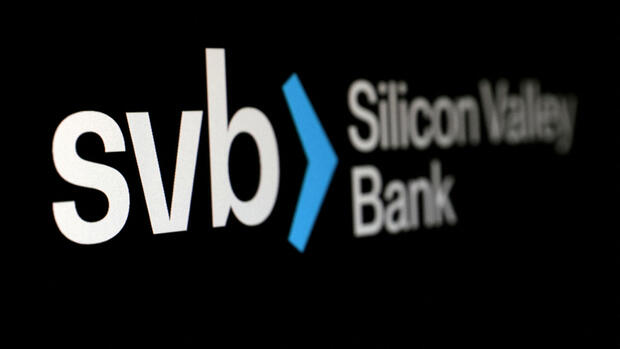The collapse of the Californian institute marked the beginning of the crisis in the US regional banks.
(Photo: Reuters)
Frankfurt If the US deposit insurance FDIC has its way, the larger US banks in particular will have to foot the bill for the rescue of several small institutions in March. It is about almost 16 billion dollars, with which the deposit protection fund is to be replenished after the violent turbulence in the American banking market in recent months.
The specific reason for the action is the collapse of the Silicon Valley Bank (SVB) and Signature Bank in March after an acute crisis of confidence. Investors quickly withdrew billions from both institutions because it was unclear whether the FDIC would guarantee all bank deposits or just the $250,000 per customer and bank that is required by law. In the end, the authority secured all assets. Otherwise, “catastrophic consequences” for the US financial system would have threatened, believes star investor Warren Buffett.
The preliminary cost of the bailout was estimated by the FDIC on Thursday at $15.8 billion. The authorities now want to distribute them to the other US banks as part of a so-called special assessment. In practice, this will probably affect larger institutes in particular. According to calculations by the FDIC, 113 US banks are affected. Institutions with total assets of more than $50 billion would account for 95 percent of the payments.
Above all, larger banks with a high proportion of uninsured deposits would have benefited from the bailout in March, FDIC Chairman Martin Gruenberg justified the plan to replenish the security fund. From June 2024, the banks concerned are to pay the fee over eight quarters. However, the parameters could still be adjusted if the estimated losses for the fund change.
After the collapse of SVB and Signature Bank in March, US bank customers had withdrawn funds in large numbers from smaller institutions and parked them at the big Wall Street houses.
>> Read here: Why the crisis of confidence in regional banks is so difficult to stop
The US regional bank crisis is not over yet. When the First Republic Bank got into trouble in April, the FDIC deliberately chose a different strategy than SVB and Signature. After the expensive guarantee of all deposits, it took weeks to sell parts of the insolvent institutes.
At First Republic, the supervisors were already looking for a buyer before the bankruptcy and were able to sell large parts of the regional bank from San Francisco immediately. Wall Street giant JP Morgan Chase won the bid.
More: “Real-time stress test” – Bafin boss warns of further turbulence in the banking sector
